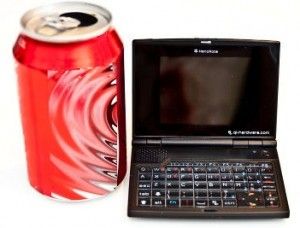Copyleft Hardware: Ben NanoNote
All geeks know that new (and sometimes not so new) hardware doesn’t always work with our chosen operating systems. Often it’s not a lack of drivers or driver developers holding back progress, but rather hardware manufacturers who prolong the release of chipset information and documentation.
Many companies would rather:
- Bastardize an older chipset to create a newer version instead of investing time into better R&D.
- Release new hardware instead of updating firmwares for older hardware. (Belkin are notorious for this)
- Reduce resources on newer device models in order to limit the capabilities of third-party firmwares … instead of … embracing the functionality-enabling hacks. (cough! Linksys!)
- Hoard chipset documentation … instead of … releasing it so that more people can develop, and make use of their product.
- Release bug-infested BLOBs … instead of … usable source code which could be forked for improvements.
It is this continous battle for hardware liberation that normally ends with many kernel / driver developers saying “Use device XYZ because we have documentation for it” while the consumer geeks ask “When will there be driver support for krappy-undocumented-device K.R.A.Pv1.0?”.
Often, it is a bit difficult for the average consumer geek to choose hardware which can be easily supported by his flavour of nix. This is mainly due to companies marketing the functionality of their hardware, but not always indicating the chipset.
Though not necessarily the first to join the fight for copyleft hardware, QiHardware has assisted by releasing their own mini-netbook, the Ben NanoNote, which compromises solely of copyleft hardware. Though aimed mainly at developers and hobbyists, the device looks extremely promising with specs as follows:
- 336 MHz XBurst Jz4720 MIPS-compatible CPU
- display: 3.0" color TFT
- resolution: 320 x 240, 16.7M color
- dimension (mm): 99 x 75 x 17.5 (lid closed)
- weight: 126 g (incl. battery)
- DRAM: 32MB Synchronous DRAM
- headphone jack (3.5 mm)
- SDHC microSD
- 850mAh Li-ion battery
- 2GB NAND flash memory
- mini-USB: USB 2.0 High-Speed Device
- speaker and microphone

Having (barely) managed to control my urge to buy-now-think-later (especially after seeing the above picture), I just need to find a purpose for this cute little device on my network before I place my order 😉